Exploring a new language is more than memorizing words; it’s discovering new ways to think, connect, and experience the world. Modern language learning software brings this journey right to your fingertips, turning your phone or laptop into a personalized classroom.
These platforms make it simple to learn at your own pace, whether you’re practicing greetings for a trip abroad or working toward full fluency. Each lesson feels more interactive and rewarding, helping you stay consistent while actually enjoying the process.
In this guide, we’ll look at some of the best language learning platforms that combine creativity, technology, and real communication. From gamified learning experiences to live sessions with native speakers, there’s a perfect tool for every learner ready to start their language journey.
What Makes a Good Language Learning Software?
Before exploring the top tools, it helps to understand what features make a language learning app truly effective and worth your time.
- Language Variety: The best platforms offer a wide selection of over 20 languages, allowing learners to explore new options or switch between different languages with ease.
- Speech Recognition: Advanced speech tools help improve pronunciation and build speaking confidence by analyzing how closely your accent matches native speakers.
- Gamified Learning: Engaging lessons that use points, levels, and progress tracking make the learning process enjoyable and motivate users to stay consistent.
- Offline Access: The ability to download lessons lets you continue learning anytime and anywhere, even without an internet connection.
- Structured Lessons: A well-designed program provides a balanced mix of reading, writing, listening, and speaking exercises to develop complete language skills.
- Affordable Pricing: Good software includes flexible plans or free versions so learners can access quality education without spending much.
List of 15 Best Language Learning Software
1. Duolingo
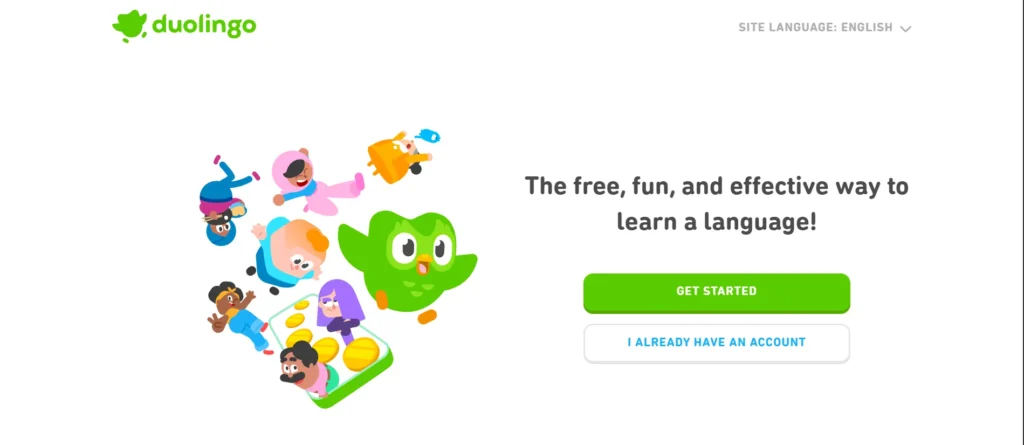
Website: https://www.duolingo.com
Duolingo stands as one of the world’s most loved language learning platform, offering lessons in over 40 languages. Its bite-sized, game-like format keeps learners engaged with interactive exercises that build vocabulary, grammar, and pronunciation skills. The app adapts to your learning pace using AI-based personalization, ensuring progress feels natural. With over 575 million users globally, Duolingo has made language learning accessible, fun, and addictive for all ages. Whether you’re brushing up for travel or starting from scratch, it’s perfect for developing daily consistency.
Features:
- Gamified interface with XP points and streaks
- Voice recognition for pronunciation
- Leaderboards and rewards for motivation
- Supports 40+ languages, including Spanish, French & Korean
2. Babbel
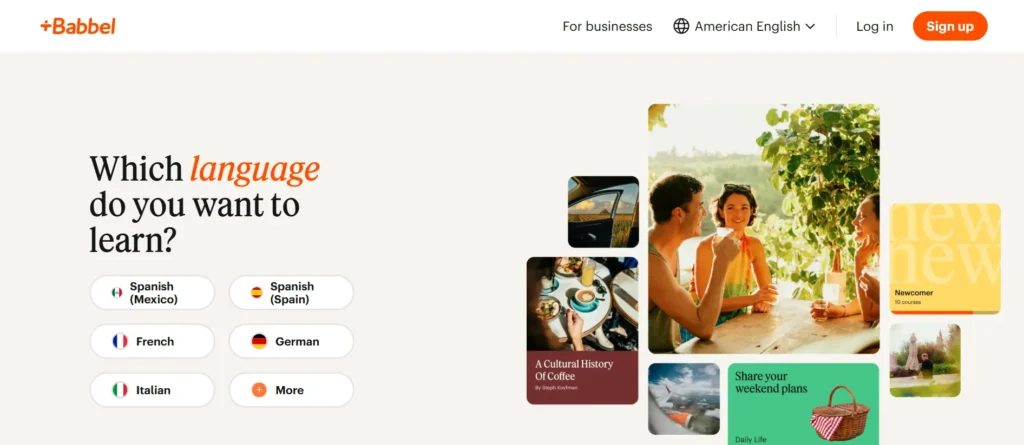
Website: https://www.babbel.com
Babbel focuses on helping learners achieve real-world communication skills through scientifically structured lessons. Created by professional linguists, it teaches grammar and vocabulary in a way that supports meaningful conversation rather than memorization. Each course includes cultural context and pronunciation tips, making it suitable for both beginners and professionals. Lessons are short, flexible, and can be completed in under 15 minutes, making it ideal for busy learners. With millions of global users, Babbel is trusted for its accuracy and quality of instruction.
Features:
- 14 languages with structured grammar-based courses
- Dialogues focused on real-world conversations
- Speech recognition for accent correction
- Review manager for spaced repetition learning
3. Rosetta Stone
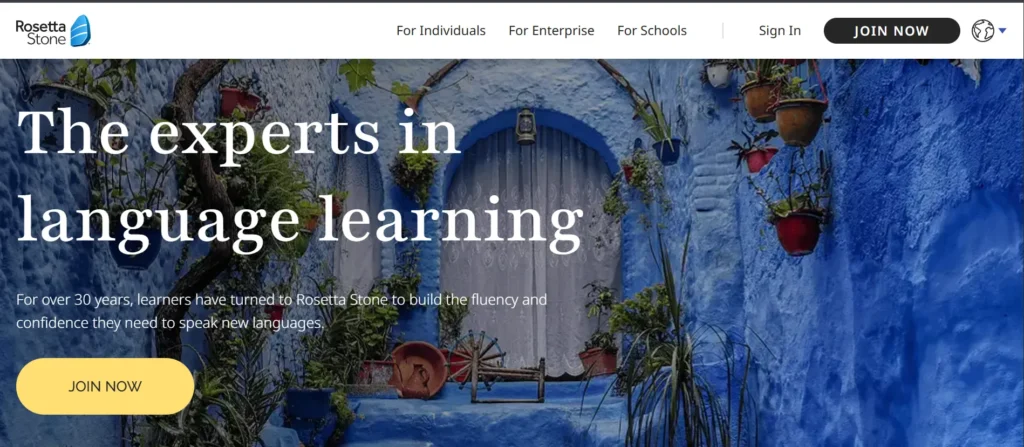
Website: https://www.rosettastone.com
Rosetta Stone has been a leader in digital language education for over three decades. It uses a complete immersion method, teaching you to think in the target language instead of translating from your native one. This approach builds natural fluency and comprehension through visual and auditory cues. Its patented TruAccent technology helps users fine-tune pronunciation with native-like precision. With 25+ languages and structured lesson paths, Rosetta Stone remains the go-to choice for serious learners aiming for long-term mastery.
Features:
- Immersive, translation-free lessons
- TruAccent voice recognition for accurate pronunciation
- Live tutoring sessions available
- Offline learning mode
4. Busuu
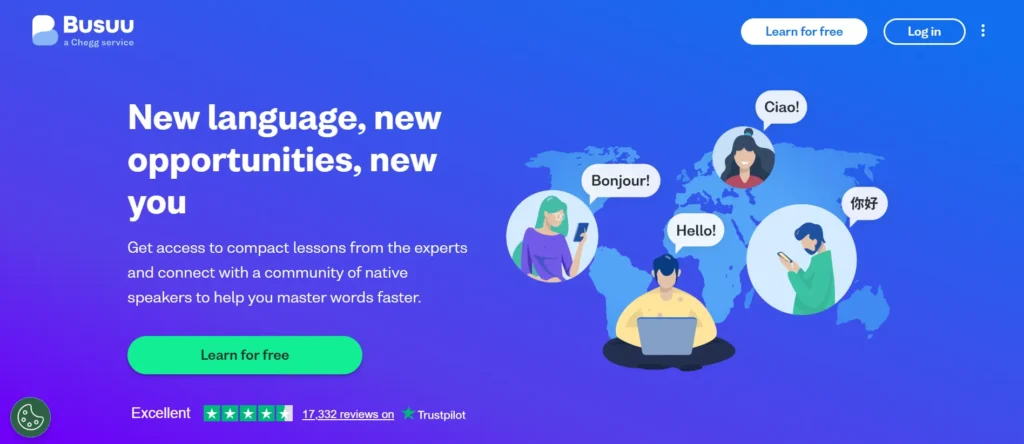
Website: https://www.busuu.com
Busuu offers an interactive, community-driven way to learn languages, combining AI-powered courses with real-world practice. Learners can connect with native speakers to receive feedback on writing and pronunciation, making progress highly practical. The app adapts to your schedule, creating custom study plans that align with your goals. Each course covers grammar, vocabulary, and listening skills in a structured sequence. With over 120 million users, Busuu has become one of the most trusted global platforms for social and intelligent language learning.
Features:
- 14 major languages
- Personalized study plans with reminders
- AI review sessions
- Native speaker interaction
Also Read: Kahoot Alternatives
5. Mondly
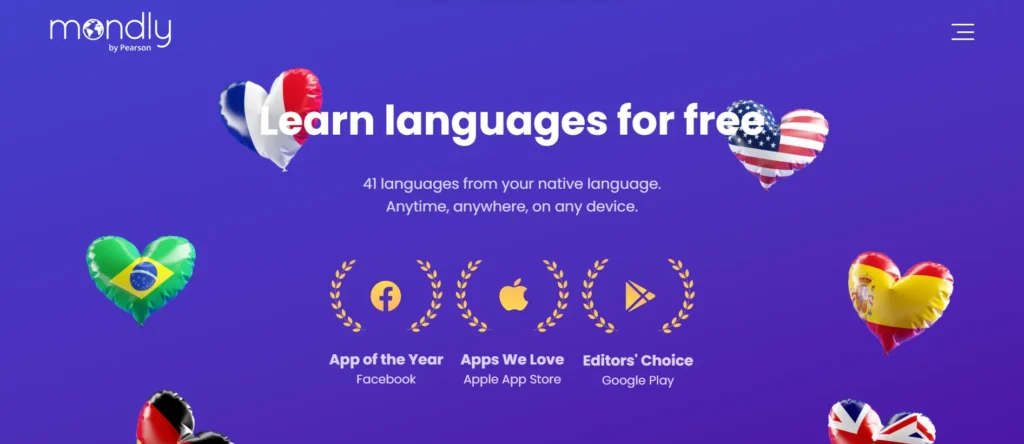
Website: https://www.mondly.com
Mondly brings a futuristic approach to language learning with its immersive AR and VR lessons. As an innovative Language Learning Software, it allows learners to engage in real-life simulations like booking a hotel or having a conversation at a café within virtual environments. Its vibrant interface, voice recognition, and chatbot-driven lessons make learning interactive and entertaining. Mondly adapts to your level, focusing on listening and speaking improvement through repetition and contextual understanding. Supporting over 40 languages, perfect for visual learners who prefer real-life scenarios over rote study.
Features:
- AR & VR-based immersive practice
- Chatbot for conversation training
- Daily lesson streaks
- Pronunciation feedback system
6. Memrise
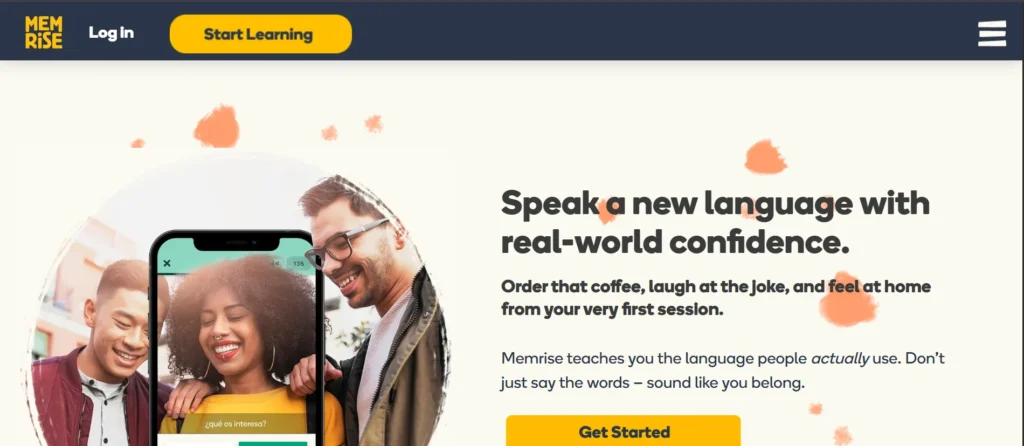
Website: https://www.memrise.com
Memrise blends real-world videos, AI tools, and mnemonic techniques to help learners absorb languages naturally. Its lessons feature native speakers using everyday vocabulary, ensuring you learn practical communication, not textbook phrases. The app’s AI-based coach provides instant pronunciation feedback, while spaced repetition enhances memory retention. With more than 65 million global users, Memrise is especially effective for learners who want to sound authentic and confident. Its short, visually rich sessions make language learning both fun and habit-forming.
Features:
- Native-speaker video clips
- Offline access available
- AI-based pronunciation coach
- Over 20 supported languages
7. Lingoda
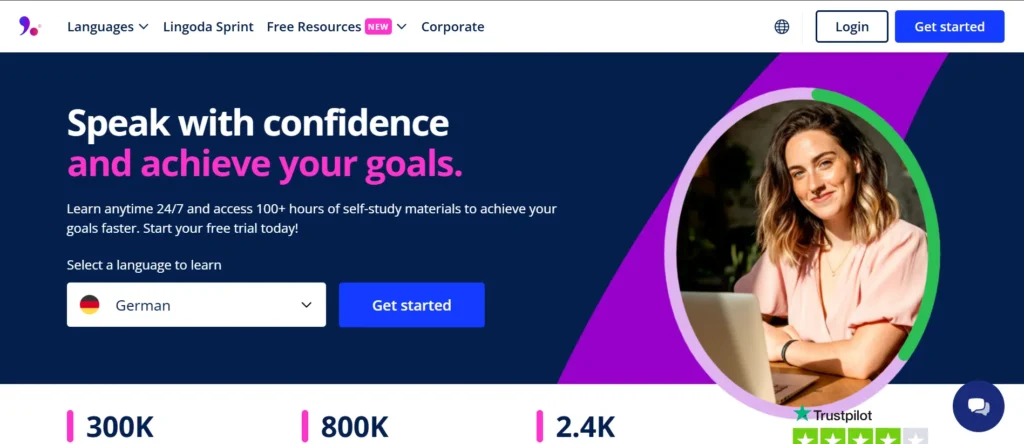
Website: https://www.lingoda.com
Lingoda is a professional online language learning software offering live, instructor-led classes 24/7. It connects learners with certified native speakers for small-group or private lessons. Classes are structured according to the CEFR framework (A1–C1), making it ideal for learners aiming for academic or professional fluency. Students receive feedback in real-time, helping them improve grammar, speaking, and comprehension faster. With flexible scheduling and lesson plans, Lingoda offers the experience of a language school, right from your laptop or phone.
Features:
- Live classes with certified teachers
- 24/7 flexible scheduling
- CEFR-aligned curriculum
- Certificates after completion
8. Pimsleur
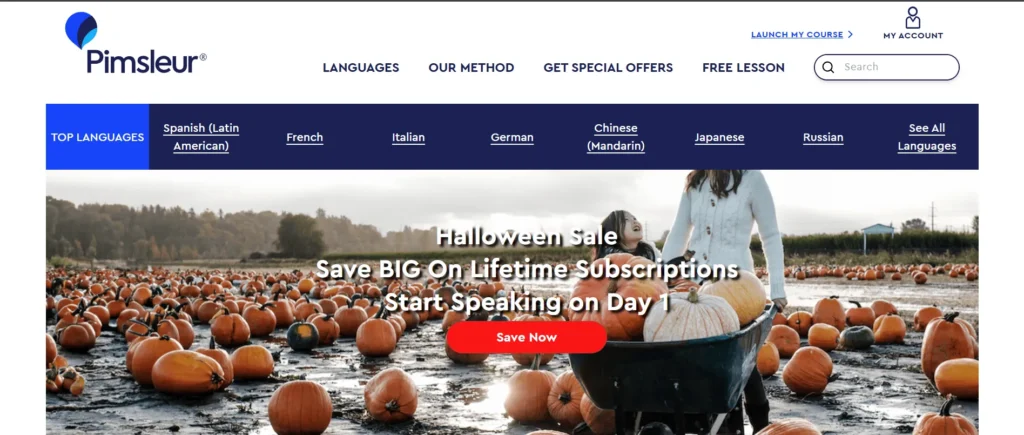
Website: https://www.pimsleur.com
Pimsleur focuses entirely on developing conversational fluency through audio-based learning. Its scientifically designed lessons help you think and respond naturally, without relying on translations. Perfect for travelers and multitaskers, you can listen and learn hands-free from anywhere. The program builds vocabulary through context, ensuring that each new word fits into real-life dialogue. With 50+ languages and a long-standing reputation for effective results, Pimsleur remains a trusted choice for learners who prefer speaking and listening over reading and writing exercises.
Features:
- Audio-based conversational training
- 50+ languages
- Works offline
- Syncs progress across devices
9. LingoDeer
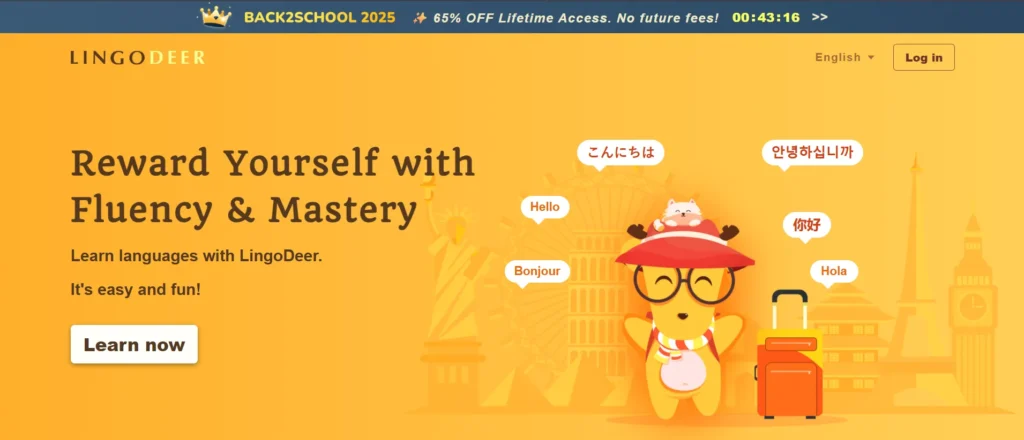
Website: https://www.lingodeer.com
LingoDeer specializes in teaching Asian and European languages with a focus on grammar and sentence structure. Unlike casual vocabulary apps, it offers deep explanations and exercises designed to strengthen understanding. Its interactive lessons, rich visuals, and speech recognition tools make it great for students and serious learners alike. LingoDeer works offline, so you can continue learning anywhere. Designed by professional linguists, it helps users achieve long-term mastery with clear, structured learning paths rather than random lessons.
Features:
- 12 languages, including Korean, Japanese, and French
- Grammar-focused curriculum
- Offline learning support
- Personalized progress tracking
10. HelloTalk
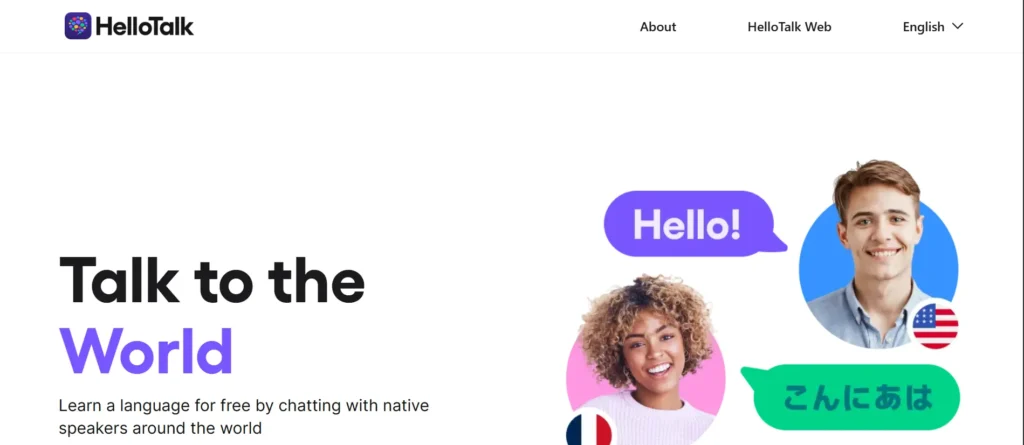
Website: https://www.hellotalk.com
HelloTalk turns language learning into a social experience by connecting users directly with native speakers worldwide. It functions like a language exchange network where you can chat via text, voice, or video. The app offers built-in translation, pronunciation correction, and grammar tools, making it easy to practice real conversations. This interactive approach helps learners understand cultural nuances while improving fluency. With millions of users from over 150 countries, HelloTalk provides an authentic environment to practice languages naturally and confidently.
Features:
- Chat with native speakers globally
- Text, voice, and video conversation modes
- In-app translation and correction tools
- Community-based learning
11. Drops
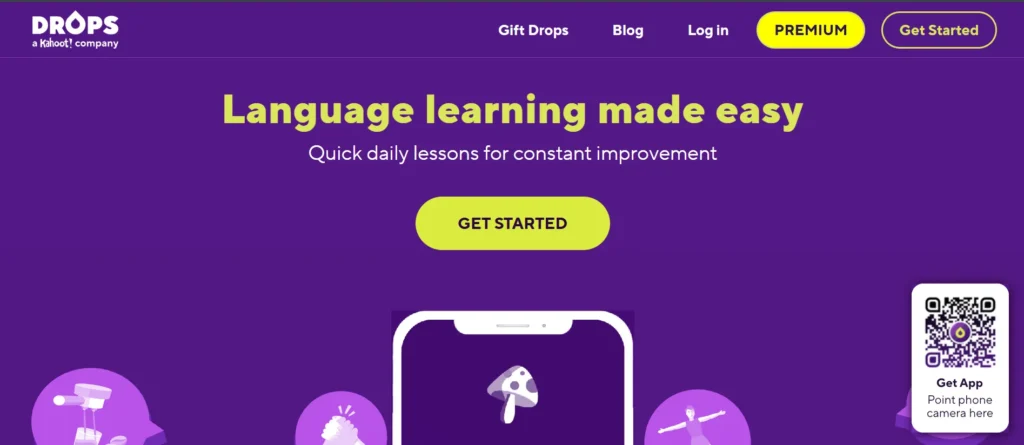
Website: https://www.languagedrops.com
Drops transforms vocabulary learning into a visual and fast-paced experience. Its sleek design and illustrated flashcards make remembering words effortless and fun. Each session lasts only five minutes, ideal for learners with busy schedules who want consistent daily progress. The app focuses on visual associations and repetition, helping users retain vocabulary long-term. With support for over 45 languages and stunning UI, Drops has become a favorite among learners who enjoy short, focused, and visually rich language practice sessions.
Features:
- Visual flashcards for better recall
- 45+ languages
- 5-minute daily sessions
- Beautiful, minimalistic interface
Also Read: Homeworkify Alternatives
12. Clozemaster
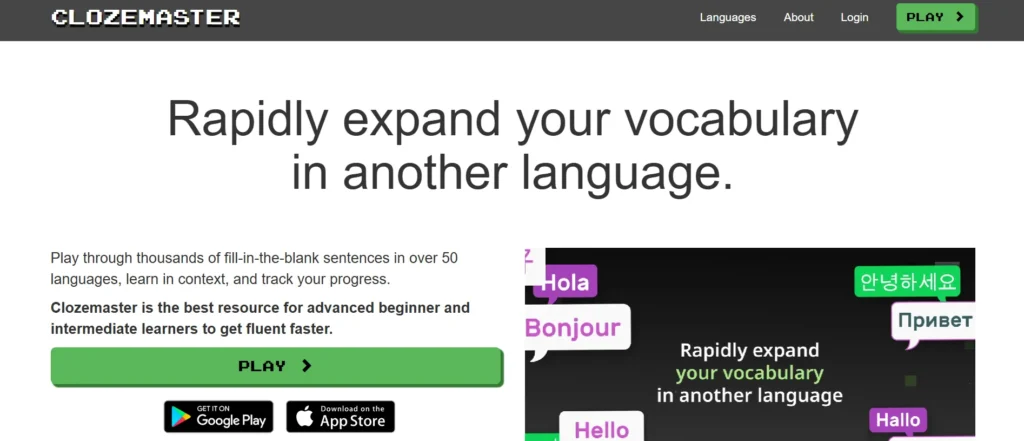
Website: https://www.clozemaster.com
Clozemaster is a smart companion app for intermediate and advanced learners aiming to expand their vocabulary through contextual learning. Instead of traditional flashcards, it teaches through complete sentences, allowing users to understand how words fit naturally within phrases. This approach helps improve reading fluency and comprehension quickly. Its large database of language pairs and audio support makes it an excellent supplement to other learning platforms. Clozemaster’s focus on context-driven practice ensures learners retain vocabulary meaningfully and use it correctly in real-life situations.
Features:
- Context-based sentence learning
- Audio practice for pronunciation
- 50+ language pairs
- Great for vocabulary expansion
13. italki
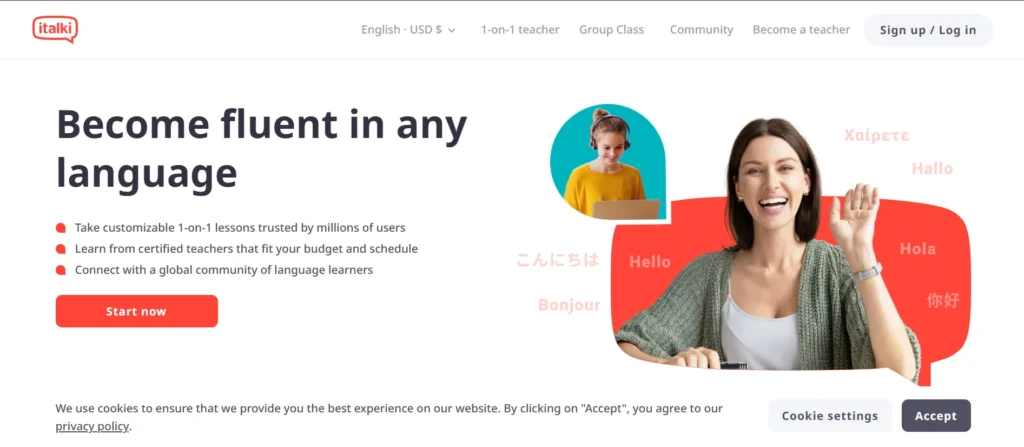
Website: https://www.italki.com
Italki connects language learners with certified teachers and native speakers from around the world for personalized, one-on-one lessons. With over 150 languages and thousands of instructors, learners can choose based on teaching style, budget, or goals. Each class is tailored to the student’s level, making learning flexible and efficient. Whether you’re preparing for an exam or improving conversation skills, italki offers complete customization. Its supportive learning community also includes language challenges and progress tracking tools to keep motivation high.
Features:
- One-on-one lessons with tutors
- Choose from 150+ languages
- Flexible pricing and scheduling
- Progress tracking dashboard
14. Rocket Languages
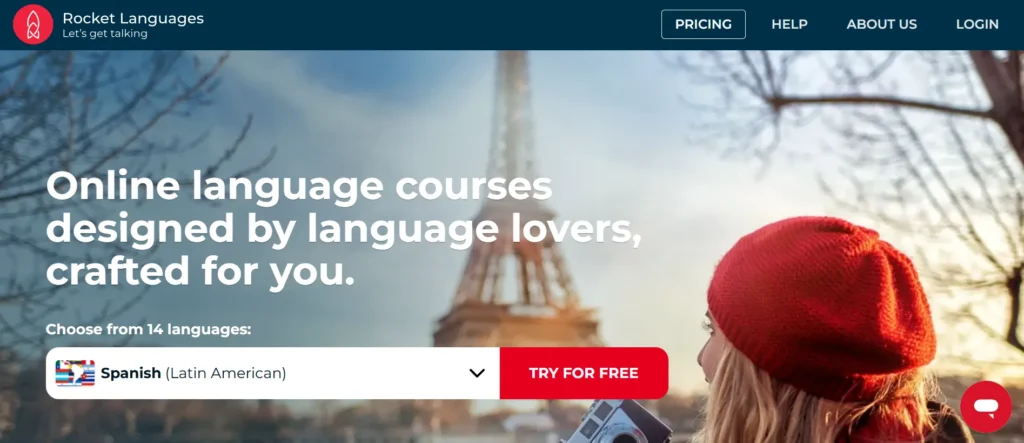
Website: https://www.rocketlanguages.com
Rocket Languages is a language learning software built for learners who want comprehensive, long-term mastery. It blends audio-based lessons, cultural insights, and interactive exercises to cover all aspects of communication, listening, reading, writing, and speaking. Each course is designed around real-life situations, making it practical for travelers, students, and professionals. The platform’s speech recognition feature offers instant feedback, helping refine pronunciation with precision. With offline access and lifetime ownership options, Rocket Languages ensures complete flexibility for serious learners.
Features:
- Comprehensive grammar and cultural lessons
- Interactive audio exercises
- Voice recognition feedback
- Offline access available
15. Beelinguapp
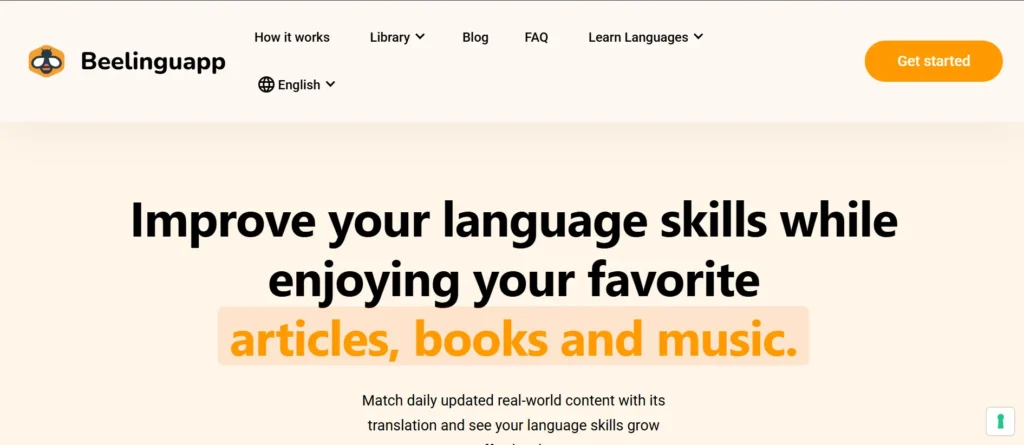
Website: https://www.beelinguapp.com
Beelinguapp offers a refreshing reading-based approach to language learning by displaying stories in both your native and target languages side by side. It helps learners understand vocabulary through context while improving comprehension skills naturally. The app includes audiobooks, children’s tales, and news stories read by native speakers. This dual-language format enhances retention by combining reading and listening simultaneously. Beelinguapp is especially helpful for learners who prefer a calm, immersive, and story-driven learning experience rather than structured lessons.
Features:
- Dual-language reading interface
- Audio narration by native speakers
- Variety of stories and news content
- Great for improving vocabulary
Comparison Table: Pros & Cons of the Best Language Learning Platforms
| Software | Pros | Cons |
| Duolingo | Offers in-app leagues and streaks that boost motivation• Light, quick lessons suitable for commuting• Integrates well with Google Classroom for teachers | Voice recognition can misinterpret pronunciation• Rewards often feel game-like rather than educational |
| Babbel | Lessons mirror natural conversation flow used in daily speech• Progress syncs across web and mobile seamlessly• Focuses on localized accents and phrases | Audio quality may differ across lessons• Requires manual tracking for vocabulary review |
| Rosetta Stone | Excellent for building long-term fluency memory• Works smoothly on low-bandwidth networks• Trusted by global institutions and schools | Interface feels dated compared to newer apps• Lacks clear progress visualization tools |
| Busuu | Native speaker community feedback enhances writing skills• Offline lessons are well-structured and reliable• Courses adapt based on real-time performance data | Live tutoring sessions are limited by time zones• Lacks advanced listening comprehension tools |
| Mondly | AR lessons simulate real-world speaking environments• Daily quizzes strengthen recall speed• Interface supports both children and adults | Vocabulary-heavy for beginners• Voice analysis is sometimes inconsistent |
| Memrise | User-generated videos bring cultural context• Supports learning slang and informal phrases• Great for accent imitation via real speech | Flashcards can feel repetitive without custom decks• Lacks writing and grammar depth |
| Lingoda | Small group classes encourage interaction• Lesson PDFs make offline revision easy• Regular fluency checks ensure measurable progress | Teacher quality varies slightly between regions• Scheduling flexibility can cause class overlaps |
| Pimsleur | Best for auditory learners and travelers• Teaches formal and polite language levels• Lessons encourage automatic sentence recall | No quizzes or tracking dashboard• Limited visual learning tools |
| LingoDeer | Offers deep grammar explanations for complex languages• Works excellently for self-paced learning• Animated visuals make grammar concepts easy | No community or live teacher support• Updates are less frequent for non-Asian languages |
| HelloTalk | Builds intercultural communication confidence• Encourages real-world, spontaneous learning• Features in-app voice rooms for open discussions | Message translation accuracy isn’t always precise• Interface can feel cluttered with too many features |
| Drops | Uses timed sessions to build word recall speed• Great for short-term goal learning• Highly visual, suitable for memory-based learners | No real-time correction or speaking practice• Progress slows down at advanced levels |
| Clozemaster | Sentence-based context improves phrase retention• Good complement tool to advanced learners• Offers competitive gamified mode for motivation | UI lacks modern aesthetics• Grammar explanations are absent |
| italki | Lets you choose teachers based on teaching style• Offers trial lessons before full purchase• Excellent for accent training and fluency testing | No uniform syllabus, depends on teacher• Session recordings not available in all cases |
| Rocket Languages | Offers cultural lessons along with language• Strong offline usability with downloadable content• Voice comparison for pronunciation is highly accurate | Platform updates are infrequent• Heavy file downloads can slow mobile devices |
| Beelinguapp | Story-based learning helps with natural phrasing• Narrated stories improve listening comprehension• Works well for passive learning while multitasking | Limited vocabulary tracking• Speech and grammar exercises are missing |
How to Choose the Right Language Learning Software
When selecting a platform, focus on your learning goals and how the app fits your study habits.
- Set clear goals: Decide whether you want casual conversations or professional-level fluency.
- Check language options: Make sure the app supports your target language and regional dialects.
- Compare features: Look for tools like speech recognition, offline mode, AI tracking, or live tutors.
- Review pricing plans: Choose flexible plans or free trials before committing long-term.
- Test usability: The interface should feel simple, engaging, and match your preferred learning style.
Benefits of Using Language Learning Software
Learning through apps offers flexibility, engagement, and cost-effective learning for all levels.
- Learn anytime, anywhere: Access lessons across mobile and web at your own pace.
- Personalized progress tracking: Get instant feedback and tailored recommendations.
- Affordable learning: Costs are much lower than traditional classroom programs.
- Fun and interactive: Gamified lessons and quizzes make daily practice engaging.
- Cultural connection: Interact with native speakers and gain real conversational exposure.
Conclusion
Language learning has never been more accessible or enjoyable, thanks to advanced Language Learning Software that adapts to every learner’s style. Whether you’re using Duolingo for gamified lessons, Babbel for real-world conversation, or Lingoda for live classes, these platforms make mastering a new language achievable for anyone. Each tool offers a unique approach from immersive lessons to personalized progress tracking ensuring that every minute spent learning brings visible improvement.
The key to success lies in consistency; dedicating just a few minutes daily can lead to remarkable fluency over time. With the right software, learning a language is no longer a challenge but an engaging journey of cultural discovery and personal growth. Start exploring the best Language Learning Platforms today and open the door to new opportunities, global connections, and a deeper understanding of the world through the power of communication.
FAQs
Q1. Which Is The Best Language Learning Platforms For Beginners?
Duolingo and Babbel are the most beginner-friendly options with interactive lessons.
Q2. What App Helps Improve Pronunciation?
Rosetta Stone and Mondly use AI speech recognition for pronunciation correction.
Q3. Are Free Language Learning Software Effective?
Yes, free apps like Duolingo and HelloTalk are great for beginners, but premium versions offer more features.
Q4. Which Software Offers Live Classes With Teachers?
Lingoda and italki provide live, interactive classes with native tutors.
Q5. Can I Learn Multiple Languages At Once?
Yes, apps like Duolingo, Mondly, and Memrise support learning multiple languages simultaneously.
 Get 50% off on Vault theme. Limited time offer!
Get 50% off on Vault theme. Limited time offer!